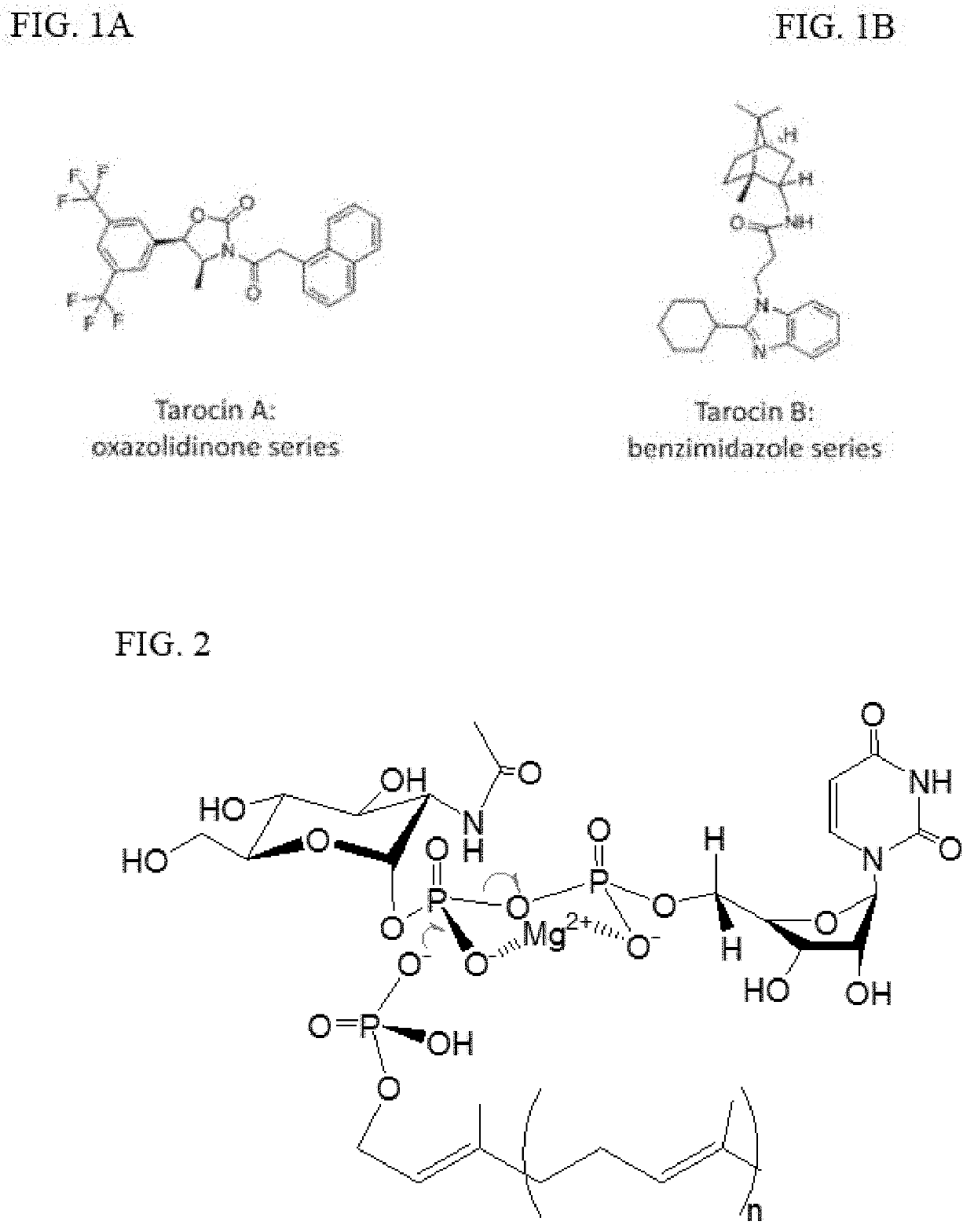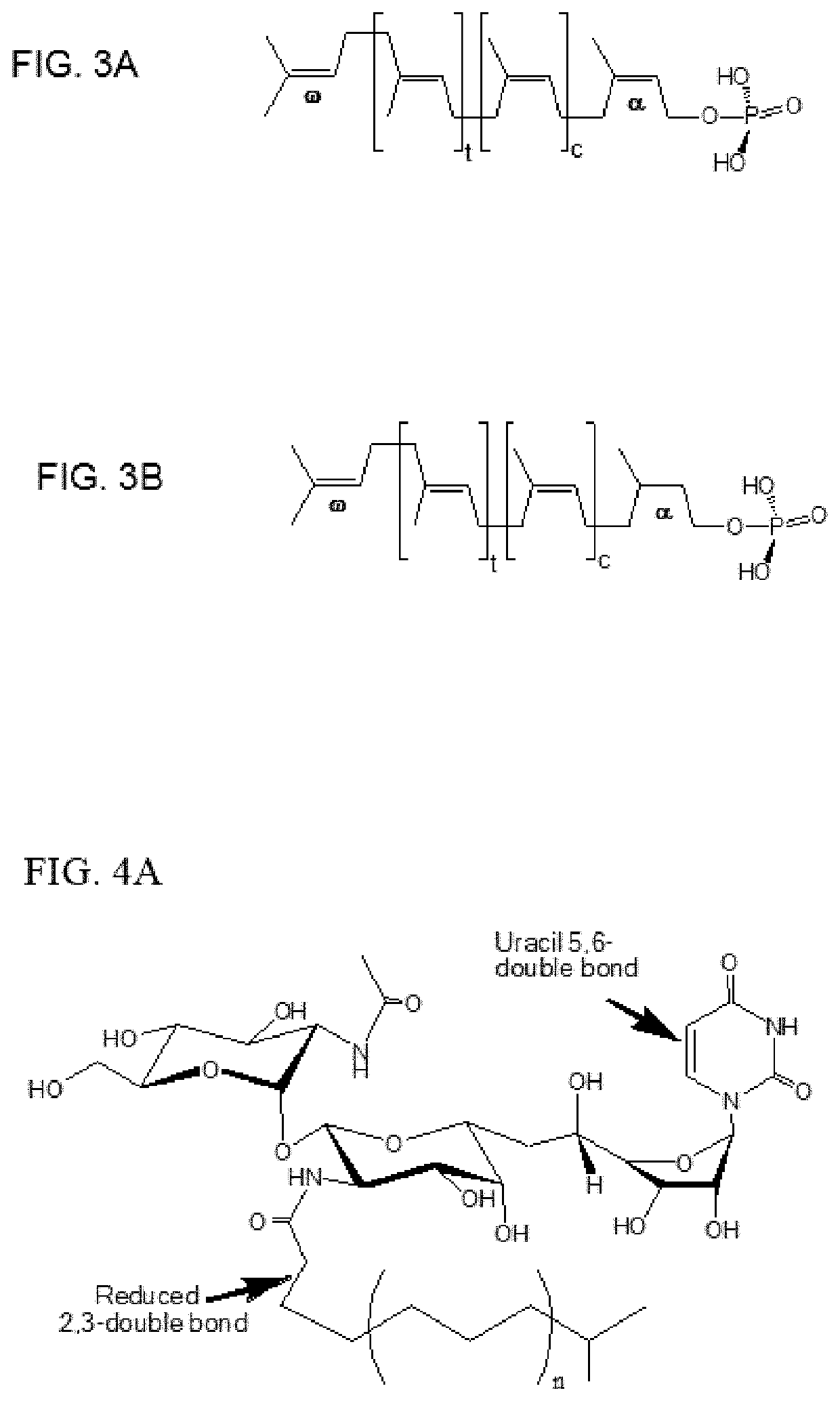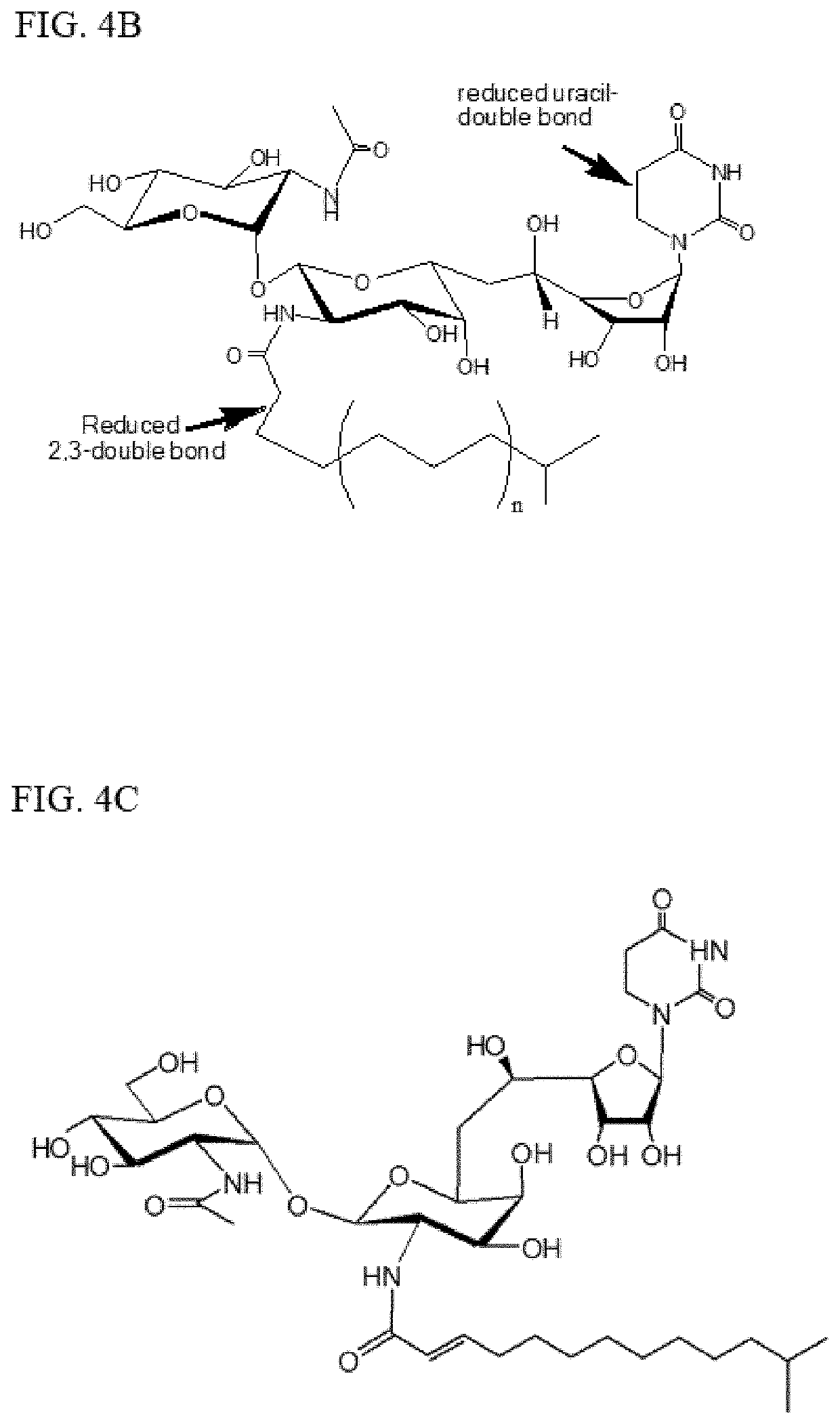Tunicamycin related compounds with anti-bacterial activity
a technology of tunicamycin and related compounds, which is applied in the field of single double-reduction of tunicamycin related compounds, can solve the problems of gram-positive bacteria, cell death, and inability to tolerate -lactam antibiotics, and achieve the effect of preventing the growth of gram-positive bacteria
- Summary
- Abstract
- Description
- Claims
- Application Information
AI Technical Summary
Benefits of technology
Problems solved by technology
Method used
Image
Examples
example 1
Quantitative Structure-activity Relationship (QSAR) Study to Identify Tunicamycin Structures that have Potent Inhibitory Effects on Bacteria and have Low Toxicity in Eukaryotes
[0064]The aim of this study is to determine whether certain structural features of the tunicamycins can be used to distinguish their relative biological activity on bacteria and eukaryotes. A library of chemically synthesized tunicamycins was previously published by Li and Yu (2015), but biological testing of this library has not been undertaken previously. The library of ten structurally-diverse synthetic tunicamycins (referred to as compounds 1 to 10) are obtained from Dr. Biao Yu, and are tested for their antimicrobial activity against a model Gram positive bacterium (Bacillus subtilis), and against a model eukaryote (Saccharomyces cerevisiae, bakers' yeast). Naturally-occurring tunicamycins produced by Streptomyces chartreusis NRRL 3882 (Sigma-Aldrich Inc., St. Louis, Mo.) are used as a positive control, a...
example 2
Eukaryotic Protein N-glycosylation Assay on Chemically-synthesized Tunicamycins Using a Pichia Yeast-based Assay
[0067]Based on the results of the QSAR antimicrobial assay described above, Compound 3 and Compound 4 have reduced toxicity on the model eukaryote (yeast) relative to native tunicamycins. Because the mechanism for the toxicity of tunicamycins towards eukaryotes occurs via inhibition of the first step of protein N-glycosylation (see, e.g., Heifetz, et al., Biochemistry 18:2186-2192 (1979)), the synthetic tunicamycins (Compounds 1 to 10) are tested using a Pichia-based assay for protein glycosylation using the assay described in Price, et al. (2016). In this assay, essentially an Arabidopsis gene for a known N-glycoprotein (AtchitIV) is altered to include a secretory leader region and is heterologously expressed using a commercially available methanol-inducible promoter system in Pichia yeast transformed with an expression vector containing this construct. When grown in cult...
example 3
Chemical modifications to Tunicamyins, Quinovosamycins, and Streptovirudins
[0069]Because the QSAR study and the AtchitIV5 N-glycosylation study highlight the importance of 2′″,3′″-double bond in the tunicamycin fatty acid chain and that reducing the double bond to a single bond results in less toxicity to the yeast, chemical modifications of tunicamycin of this double bond and the double bond in the uracil group is explored. As mentioned supra, naturally-occurring tunicamycins contain a fatty acid chain that contains an unsaturated 2′″,3′″-double bond; i.e., conjugated to the acyl amide carbonyl group. They also contain a uracil group with a second double bond in the uracil ring. However, first tests are conducted on uridine as a model compound to assess how best to reduce the double bond in the uracil group in tunicamycin. Uridine contains an N-linked uracil group analogous to that found in tunicamycin.
[0070]20 mg uridine (Sigma-Aldrich Inc., St. Louis, Mo.) is dissolved in methano...
PUM
| Property | Measurement | Unit |
|---|---|---|
| temperature | aaaaa | aaaaa |
| temperature | aaaaa | aaaaa |
| mass | aaaaa | aaaaa |
Abstract
Description
Claims
Application Information
 Login to View More
Login to View More - R&D
- Intellectual Property
- Life Sciences
- Materials
- Tech Scout
- Unparalleled Data Quality
- Higher Quality Content
- 60% Fewer Hallucinations
Browse by: Latest US Patents, China's latest patents, Technical Efficacy Thesaurus, Application Domain, Technology Topic, Popular Technical Reports.
© 2025 PatSnap. All rights reserved.Legal|Privacy policy|Modern Slavery Act Transparency Statement|Sitemap|About US| Contact US: help@patsnap.com



